Several years ago, my friend Kara gave me a birthday gift that changed my life. Over the course of a month, we watched a step-by-step video course and made our first quilts alongside one another. I don’t mean to be facetious or hyperbolic by saying that this changed my life—quilting rewired my brain, taught me to enjoy process just as much as outcome, and gave me an outlet for the energy I’d been too blocked to express in writing for years. We are both avid quilters now (she more so than I—her work is truly amazing.)
Just as in fashion, questions around appropriation often come up in the quilting community. Should white quilters use fabrics like batik and ankara in their quilts if they have no cultural connection to them? Should a major fashion designer reproduce traditional Hawaiian quilt patterns as a print in a new collection? Is it okay or deeply icky for The Six Bells (the newest endeavor from Audrey Gelman, founder of the Wing) to sell Gee’s Bend quilts? (Okay, that last one is my own personal thing, but I cannot believe more people are not talking about it… obviously Gee’s Bend quilters should be allowed to make bank but the thought of Audrey Gelman taking a cut of the profits from art made by Black women makes me super uncomfortable… anyway…)
Another ongoing discussion in both the quilting and the fashion worlds is that of craft and value—is a quilt art? How much do you need to charge for a quilt to make a living as a quilter? How best to balance the fact that fairly pricing a quilt excludes many people from purchasing it without devaluing your work? What is a woman’s time worth, and how can she get others to value and respect it?

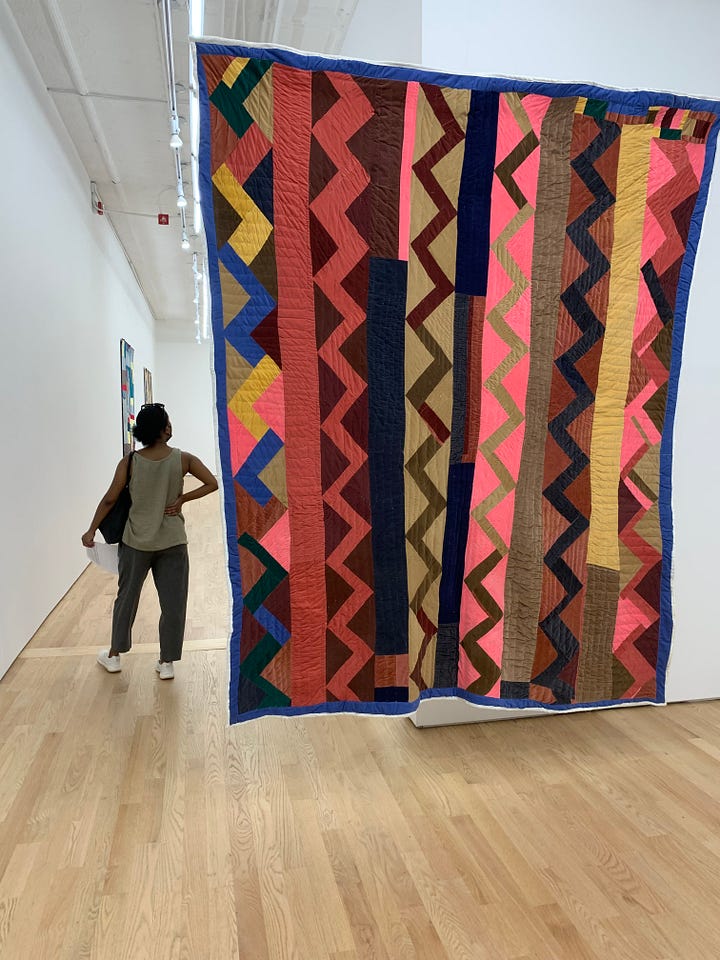
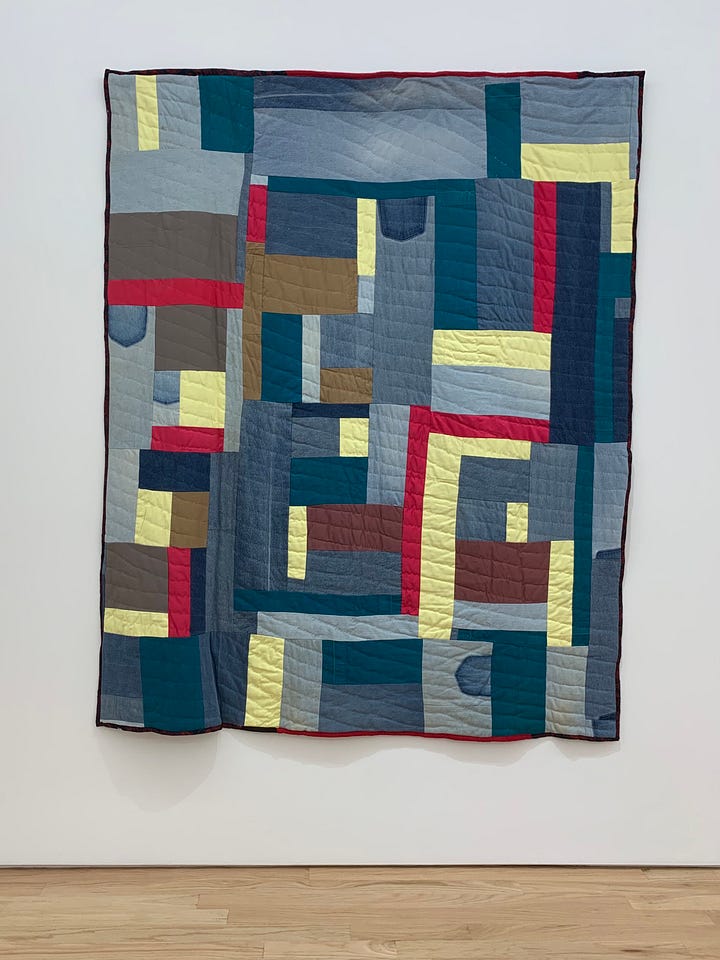

These same essential questions come up over and over again in both quilting and fashion, both often both dismissed as “women’s work” or “frivolous” pursuits—who is allowed to make what, who is allowed to profit from it, and when does it become Art?
A couple years ago, a well-established quilter named Mary Fons posted an inflammatory video on YouTube entitled “Stop Cutting Up Quilts To Make Clothes.”
In the twenty-two minute video, Fons makes an impassioned but condescending argument, undercutting her well-informed historical perspective with ad hominem attacks on various fashion choices that have nothing to do with the quilts they are made from. Her objection to quilt clothes seems as much about a distaste for statement collars and chore coats as it does the actual practice of cutting up quilts. (She also repeatedly pronounces the name of the designer Emily Bode as “boh-DAY,” which is a bit distracting. As someone who can spell many more words than she can pronounce, I feel you, but I would be doublechecking something like that before putting it on the internet. As a side note, I highly recommend
’s piece on Bode as its own cultural phenomenon!)I have a beautiful old quilt in great condition that I got from a stoop sale in my neighborhood. I’d guess from the style, fabric, and hand quilting that it’s from the 1940s. One of the biggest regrets I have (yes, truly) is letting my dog sleep on it when he was young, which resulted in a portion of the quilt being chewed off. I don’t want to turn it into a coat, but it’s been folded up on top of a cabinet in the office until I figure out how to fix it. That’s not the way it deserves to be used.
I’m also thinking about how many quilts I’ve seen at antique stores or on Etsy or the estate sale website I now frequent, and how many of them have stains or torn edges but are otherwise intact—I imagine that many of the quilts turned into garments are also ones that have been found in similar shape. Would it be depressing if every vintage quilt was turned into a jacket? Yes, but if the choice was between quilt coats being worn joyfully and hundreds of old quilts yellowing in an attic stash, I’d choose the former.
If you want to dive even deeper into this, you should absolutely take a look at the discussion on r/craftsnark (surprisingly vibrant and thoughtful comments for a snark subreddit.) Here’s one commenter’s remark that stood out to me:
I also fully agree with the point that quilts were inherently about using up every last bit of fabric, recycling fabrics, and making do. Using old quilts to make jackets fits with that tradition perfectly. - u/froggie500
I don’t have a full rebuttal for Fons, nor a definitive answer or one-size-fits-all opinion. What I will say is that a blanket statement is usually a sign that your argument may not hold up under nuance—must truly thoughtful stances require more than a sentence or a deliberately inflammatory video title. I will also say that an argument in favor of honoring heritage and tradition often inherently positions itself in opposition to change and progress.
Around the same time as that video was posted, my friend found and subsequently introduced me to our local quilters guild, a group of around 200 people who meet once a month in a church hall for show and tell, workshops, and fabric exchange. It’s overwhelmingly made up of white women over the age of sixty, though there are many longstanding members who are women of color, and younger members of all genders. There are so many members of the guild that I would absolutely consider artists, even if they would never describe themselves that way or have never assigned monetary value to their work. I always leave those meetings feeling inspired (and with free fabric from the scrap table, an overflowing pile that functions as a literal manifestation of generosity from the older members of the guild to the younger ones.)
Maybe it’s worth looking at discussions and disagreements as an ongoing part of participating in a community. Community can act as an antidote to snap judgment, if you let it. And if you choose not to, you may find yourself litigating your side of an argument for far longer than it takes to record and post a 20-minute YouTube video.





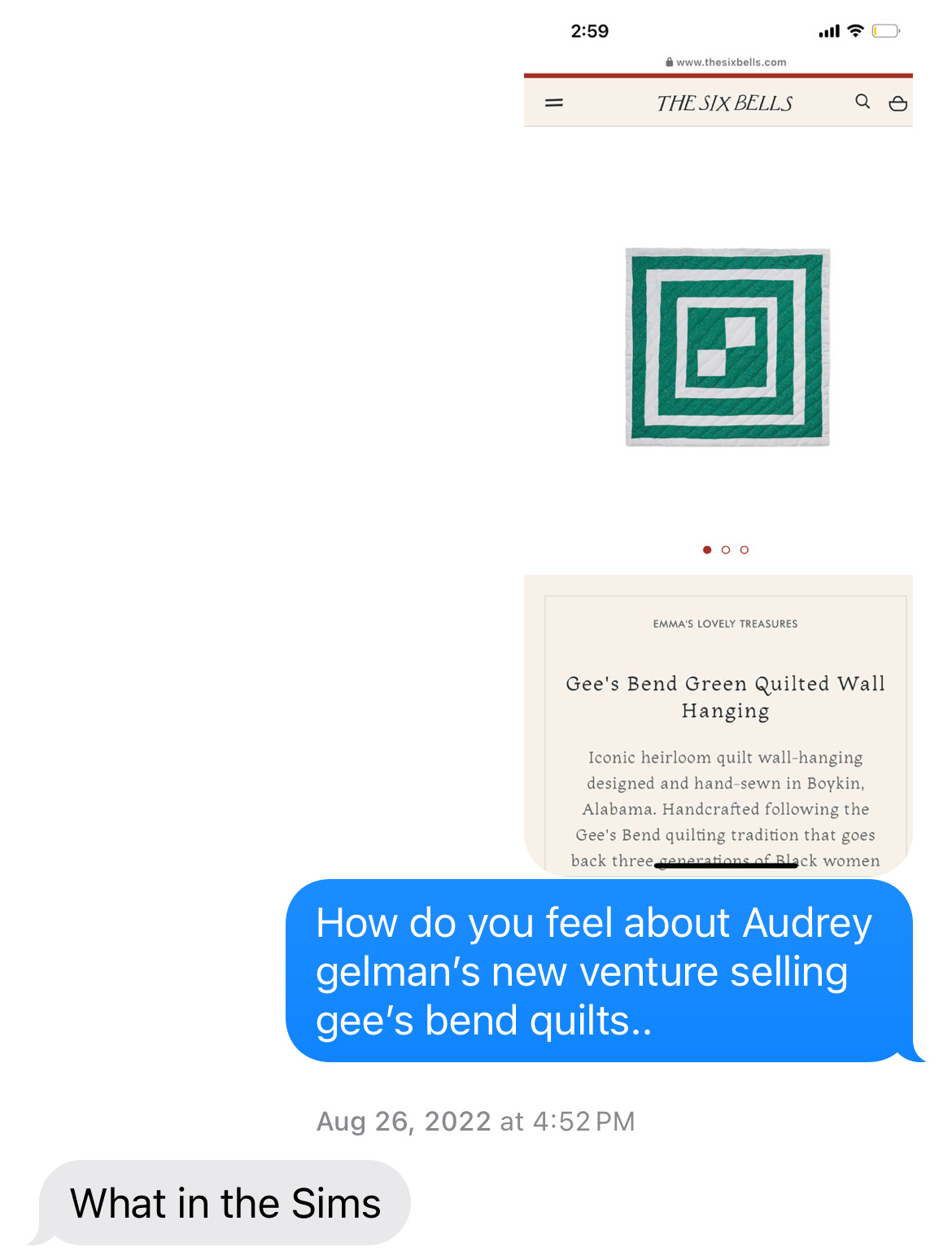

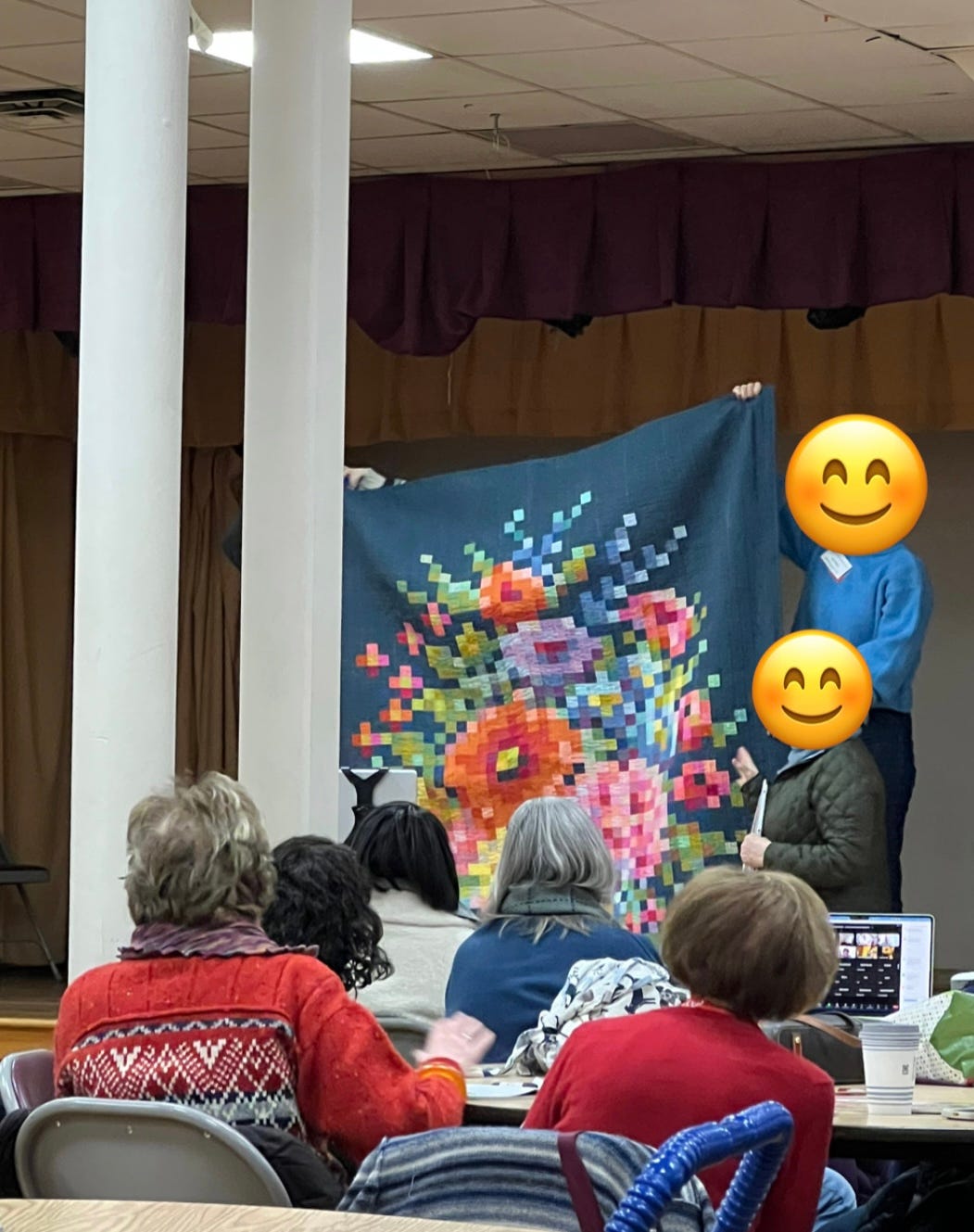
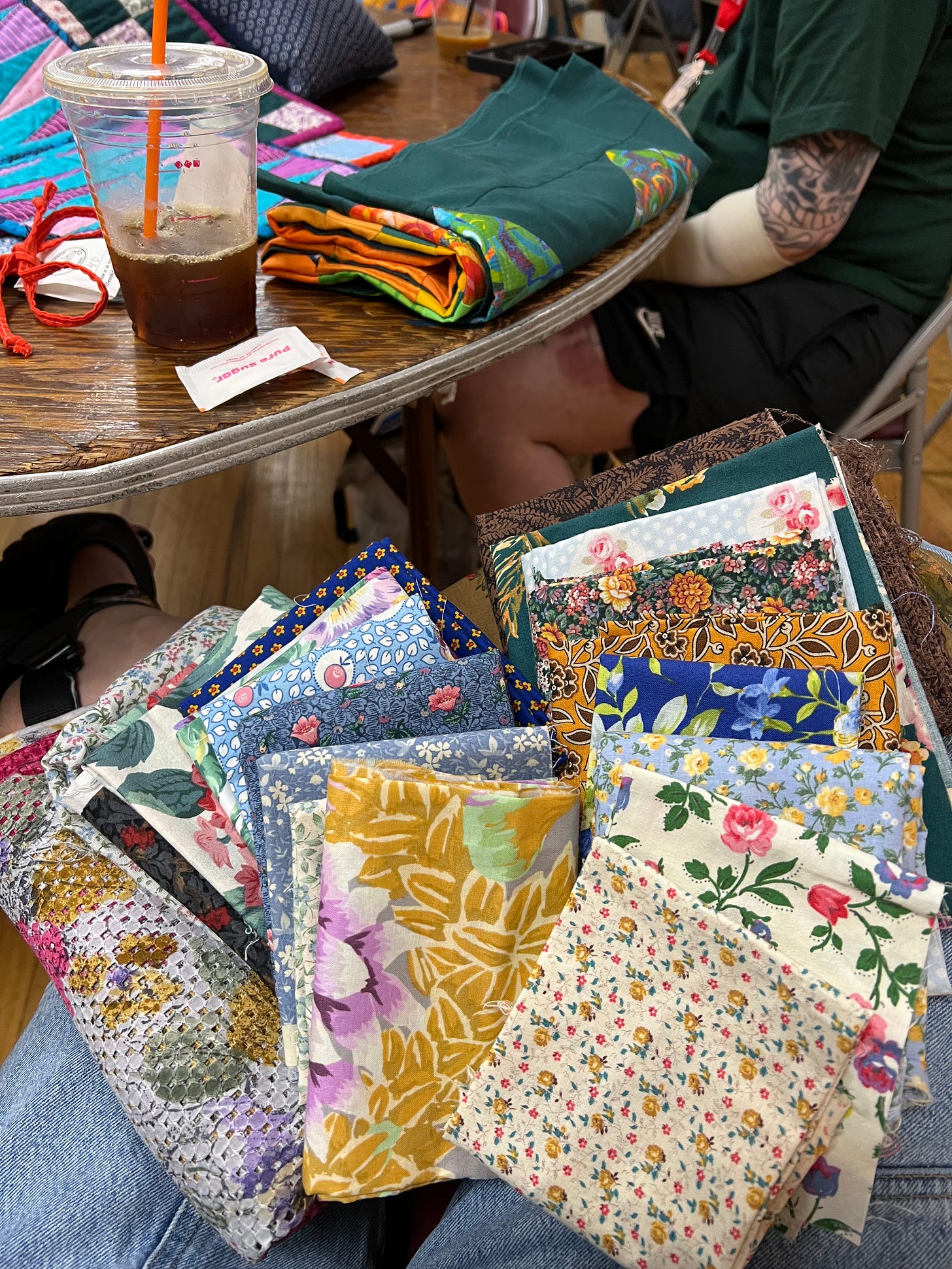
Omg the Mary Fons video! Launched a million arguments in every direction! (Thank you for mentioning me!)
"Maybe it’s worth looking at discussions and disagreements as an ongoing part of participating in a community."
I think this is a concept that is feeling more lost as we progress further into being way too connected online. I was just talking with someone about the lack of ability many have to accept the nooks and crannies of the "grey area" and exercising a certain level of empathy when discussing complicated topics.
My sister was actually a quilter by profession until a few years ago because of a lot of the complexities you mentioned - but I will take this moment to sing her praises and show off her incredible talent because I'm forever a proud sister https://www.instagram.com/p/BWikzoFH4UH/
I would love to see some of your quilts- your scrap haul alone is dreamy!!
What workshop series did you watch? I bought a vintage all metal Kenmore sewing machine but have never used it. I really want to learn how to sew when I have adequate space for a crafting area.
I have a vintage hand stitched quilt I got at a thrift store for $13, and it is one of my favorite things I’ve thrifted. The time that went into it is so evident. I placed it at the foot of my bed and took it off after I saw little claw marks. My cats loved sleeping on it, but the little claw pricks made me go 😱 It’s a hard line of not being precious with your stuff and not enjoying it when you live in a studio apartment with pets!